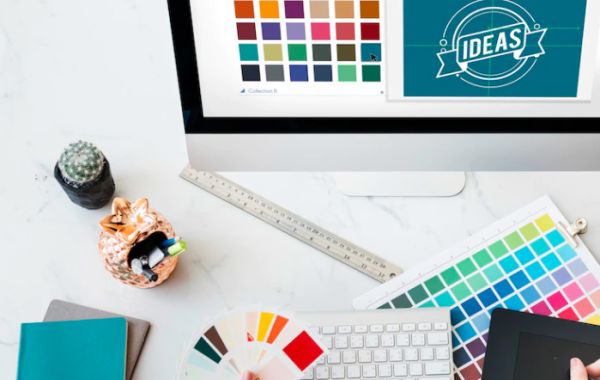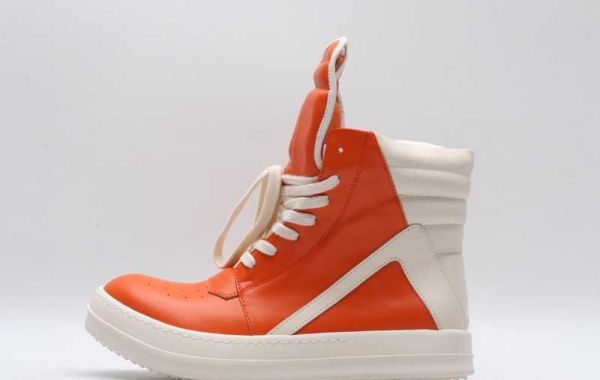Did you know that according to a study, consumers subconsciously evaluate a product in under 90 seconds, with up to 90% of their evaluation being based solely on color? Color may also boost brand identification by 80%.
Your brand colors offer a direct route to the hearts of your target audience. You can express everything about your brand with a custom logo design without really saying it. Your customers should be able to recognize your brand's logo right away. The most recognizable logos are simple and with the right selection of colors.
You can learn logo designing or hire a creative and logo design services in the USA to get professional logos. However, this article will give you a clear understanding on how to pick the right colors so even when experts are working for you, you can give a valuable input during the process.
But Before that we need you to know the meaning that the most common logo design colors reflect.
Widely Used Logo Design Colors and their Meanings
Red
Red stands for excitement, strength, energy, and passion making a brand more noticeable in the crowd. If your brand is brash, fun, young, or contemporary, red is your color. And if it is more serious and mature, you might not like red. It is a common choice in the food, technology, automotive, and agricultural industries. Some famous examples of brands that utilize the color red in their logo and brand palette include HM, Adobe, and Coca Cola.
Orange
A combination of yellow and red, orange takes on traits of both of those primary colors. Orange is an invigorating, playful color. It is the color for emotion, youth, optimism, and enthusiasm. Go orange to stand out from the crowd. It’s used less often than red but still packs an energetic punch. However, be cautious when using orange if your brand is trying to appear luxurious or serious, as orange does not invoke those traits in consumers.
Yellow
One of the first colors that people were able to combine was yellow, which is a primary color in subtractive color systems. Yellow logos convey friendliness and accessibility. Yellow radiates joy and positivity, and it will give your brand a more accessible, energetic vibe. On the other hand, the majority of consumers do not equate yellow with sophistication or luxury companies, so if that is how you want your company to be perceived, reconsider. Three well-known brands that make use of yellow in their color schemes are McDonald's, lays and shell.
Green
In the energy, food, household, and technology sectors, green is a popular brand color. Green is a prominent hue used by three well-known businesses, including acer, Starbucks, and Android. Since green typically reflects the natural environment, eco-friendly, vegan, and natural wellness firms frequently include it in their logos. But practically any kind of business can benefit from being green!
Blue
Choose blue for your custom logo design if you want to exude classic confidence or ensure trust in your brand because blue symbolizes trustworthiness and maturity. One thing to keep in mind, though, is as the classic king of colors, blue appears in over half of all logos. And because blue can also evoke calmness, you’ll need to find a way to avoid fading to the background! Blue is one of the most prevalent colors within brand color schemes, particularly those within fields relating to energy, finance, airlines, technology, healthcare, and agriculture.
How many Colors to have in your Logo Design
You could first wonder how many colors you need to use to define your brand. When studying some of the most well-known brand color schemes in the world, it becomes clear that many of these palettes contain three essential components:
- A brand's base color is its most defining hue. Therefore, it should appeal to your target audience while reflecting your most significant brand personality feature.
- The second-most significant brand color, after the base color, is the accent color. It must complement your base hue and be appealing to your target audience in addition to conveying another aspect of your brand.
- A neutral hue is one that blends your color pallet subtly while not drawing undue attention to itself. Consider hues that you would generally use for the background, such as various tones of white, beige, or grey.
How to Choose Your Colors for Custom Logo Design?
When we examine various businesses, we can observe how their logos have changed through time as a reflection of their brand.
The industry, the style of your logo, and how you want people to view your business should all be taken into account when selecting the ideal color for your logo.
Understand the Color Wheel
The discovery that clean white light is made up of seven visible hues, also known as the colors of the rainbow, by English physicist and mathematician Isaac Newton in 1666 provides the basis for the color wheel.
The three secondary colors (green, orange, and purple) are made by combining two basic colors that are red, yellow, and blue respectively. Finally, by combining primary and secondary colors, six tertiary colors are produced.
Using a color wheel, there are six major ways to produce harmonious color combinations.
- On the color wheel, complementary colors are placed opposite one another and are the basic in the color harmony,
- Analogous colors consists of three hues that are placed next to one another.
- Three colors that are equally spaced apart on the wheel are known as triadic colors.
- Split-complimentary, a scheme based on three complementary colors,
- Tetradic, a four-color scheme based on two complementary pairs,
- and square, unlike rectangular, the colors are equally spaced, are all examples of complementary color schemes.
Keep the Brand’s Message in Mind
The development of enduring relationships with consumers and the audience at large is one of any business's primary objectives. You must demonstrate your brand's mission statement and fundamental principles in order to do this. Additionally, choosing your logo design and color wisely might assist your audience form the proper impressions of your company.
Having said that, consider the unique traits that make up your brand. Which benefits do you wish to highlight? swiftness, risk-taking, effectiveness, compassion, and intuition?
Manage Color Schemes Carefully
When designing a logo, it's important to carefully manage the color harmonies mentioned above.
You should choose a dominating color, utilising the remaining colors mainly as accent and support colors. Complementary colors, on the other hand, can be overly intense if used excessively, while analogous schemes have the reverse issue: they are soft and aesthetically beautiful but lacking in contrast.
Triadic schemes are significantly more colorful, but remember to choose one of the three colors as the prominent one. As there is a strong natural balance of contrast and harmony, split-complementary schemes are frequently the safest choice for novices.
Given the additional color options, tetradic and square color schemes are also rather adaptable. However, one color should always take centre stage, and you should pay special attention to the harmony of warm and cold hues.
Research Industry-Specific color trends
Skillful planning and execution are required for every aspect of the brand and its promotion. Analyzing your industry is one method for selecting your logo and color palette for your brand. Companies that utilise particular colors are unconsciously linked to the sectors they serve.
A brand can gain instant awareness by "owning" a color in its industry and gain a significant competitive edge—in some situations, even without using its name or logo.
Understanding the current trends is the first step in achieving color-based standout in any given market sector; for example, blue is frequently used in the financial industry while green is frequently used in the branding of environmental organizations. When possible, avoid the obvious.








